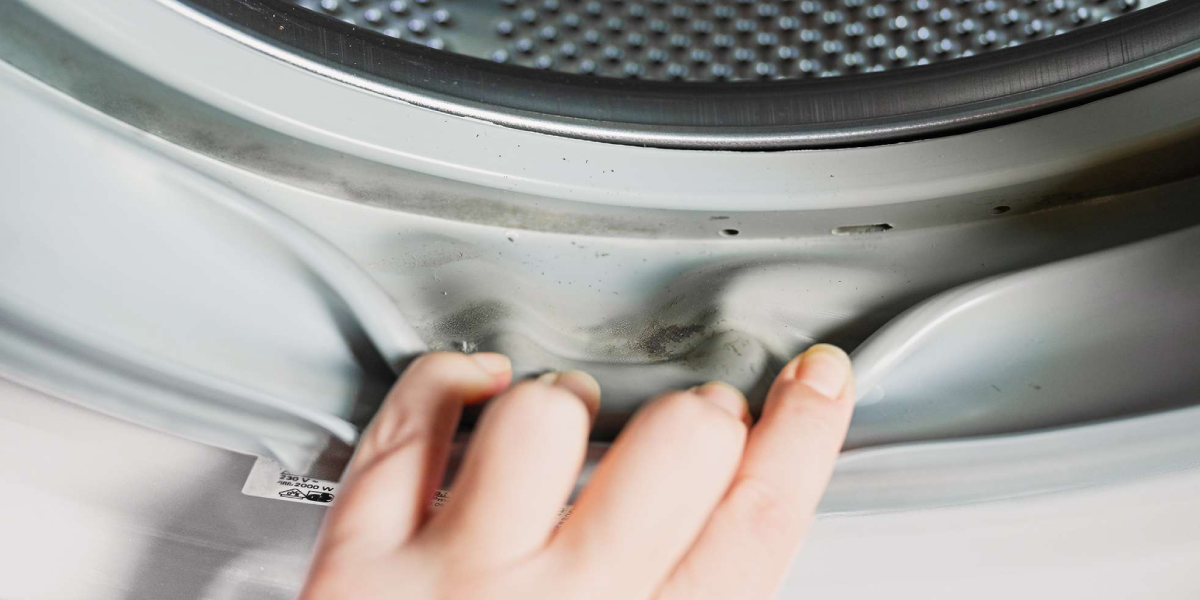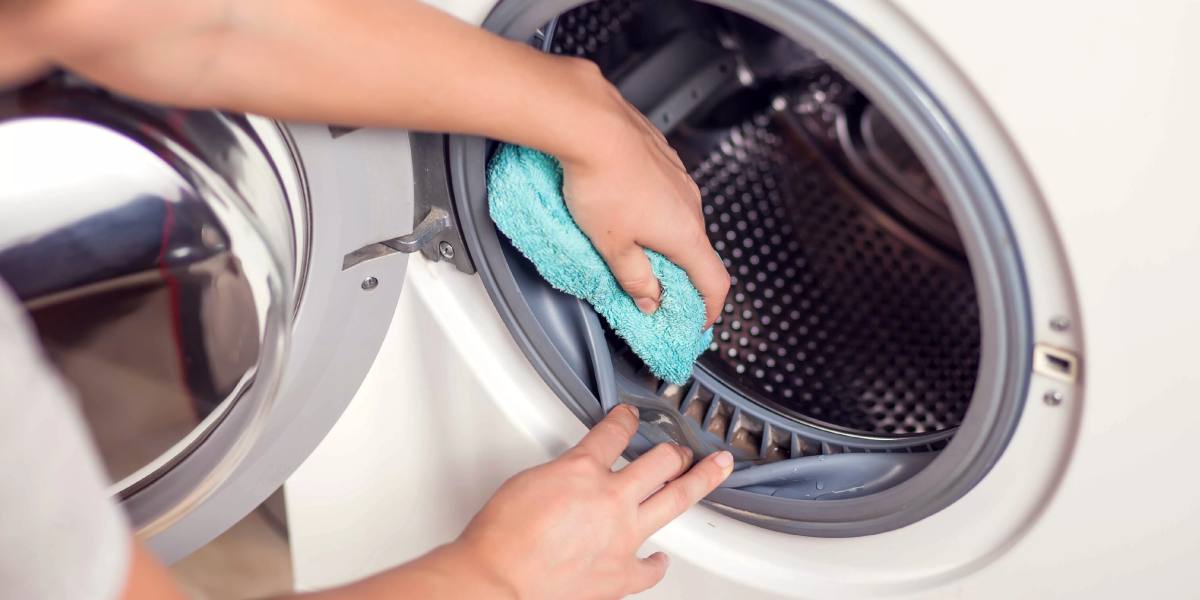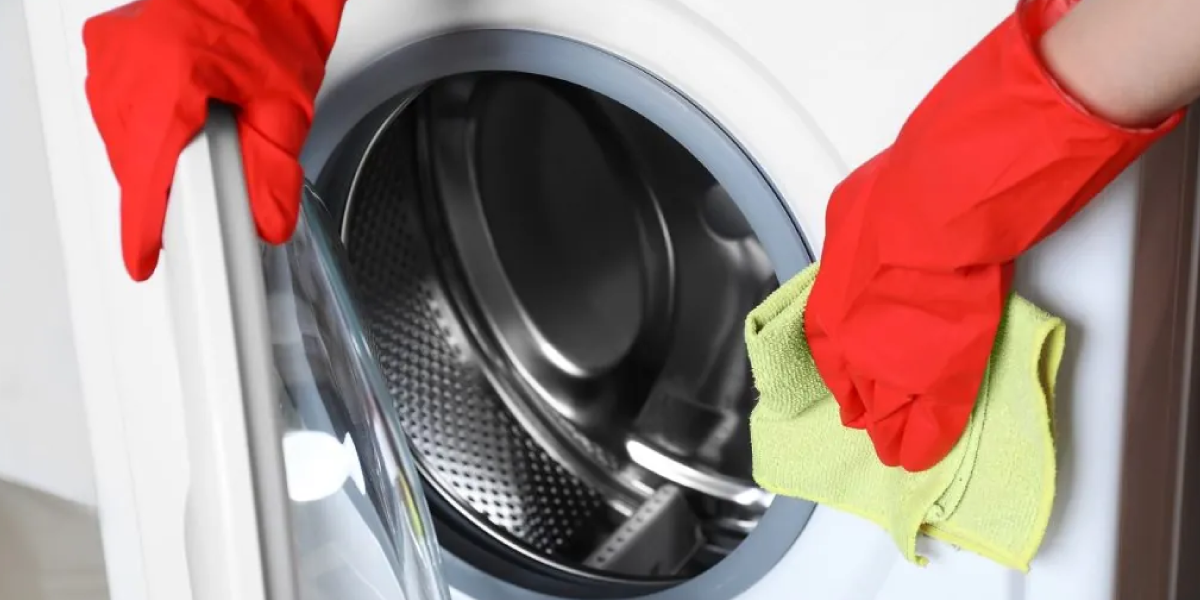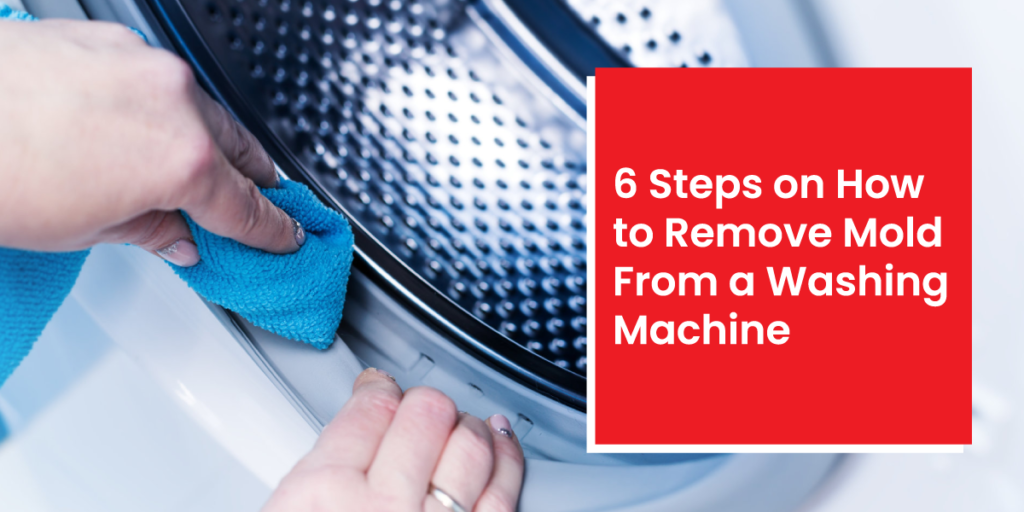Have you ever opened your washing machine and got hit with a weird, musty smell? Or maybe you saw some black spots around the rubber part or in the soap drawer? That’s mold, and it means your washer needs a good clean.
If you’re wondering how to remove mold from a washing machine, here’s the quick answer: to remove mold from a washing machine, you have to run a hot wash with bleach, wipe the rubber seal, and clean out the soap drawer. That takes care of most mold hiding inside.
In this blog, we’ll walk you through everything in simple steps: how to spot mold, clean it the right way, keep it from coming back, and when it’s time to call in a pro.
Let’s get started!
Why Does Mold Grow in Washing Machines?

Before knowing how to clean the mold in the washing machine, you must know why mold grows there.
Washing machines are dark, warm, and often stay damp. That makes them the perfect place for mold to grow, especially if leftover detergent or fabric softener is stuck inside.
Here’s why mold inside the washing machine builds up:
| Reason | Explanation |
| Damp and dark inside | Mold loves dark and wet places |
| Leftover detergent and soap | These leave residue that traps dirt and bacteria: mold’s food |
| Door often stays closed | No air circulation, so moisture stays inside |
| Not cleaned regularly | Mold keeps growing if not cleaned properly or often |
What are the Signs That Your Washing Machine Has Mold?
Before you start learning how to clean a moldy washing machine, first, you need to know if there’s mold. Look out for these signs:
- Musty or sour smell coming from the washer drum or detergent drawer
- Black or green spots on the rubber gasket, drawer, or inside the drum
- Clothes coming out smelling bad even after a wash
- Visible buildup of residue near the door or drawer.
How to Remove Mold From a Washing Machine (Step-by-Step)
Even if you’ve never cleaned your washer before, this guide is for you. Just follow these simple steps using easy-to-find materials.
Here’s how to remove mold from a washer.
What You’ll Need
| Tools | Materials |
| Microfiber cloth | Chlorine bleach or hydrogen peroxide |
| Small scrub brush | Warm water |
| Sink or bucket | Optional: vinegar |
| Protective gloves |
Step 1: Take Everything Out First
First things first. Make sure your washing machine is completely empty. No clothes, no leftover soap or softener. Also, pull out the drawer where you usually pour detergent and fabric softener. That part needs cleaning, too.
Step 2: Set the Right Wash Settings
Now turn on your washer and choose a regular wash cycle for a big load. Set the water to warm or hot. This helps the water flow strongly, and the heat will help kill the mold.
Step 3: Add Bleach and Start Washing
Next, grab some chlorine bleach. You can either pour 1 full cup straight into the drum or add half a cup into the detergent drawer. Also, fill up the bleach compartment all the way.
Now let the washer run a full cycle with just hot water and bleach. This will clean out the inside and flush away mold, bacteria, and bad smells.
Just a heads-up: never mix bleach with vinegar or hydrogen peroxide. It can make dangerous fumes that are bad for your health.
Want to know the right bleach mix for cleaning mold? Check out this simple guide on the bleach-to-water ratio for mold.
Step 4: Wipe the Door and Rubber Seal
After the cycle finishes, put on your gloves. Make a cleaning mix using 1/4 cup of bleach and 2 cups of water. Dip a soft cloth or brush into that mix.
Now gently pull back the rubber seal around the washer door, especially if you have a front-load washer. That’s where mold usually hides. Scrub inside the folds carefully, and once it’s clean, wipe everything dry with a towel.
Step 5: Deep Clean the Soap Drawer
Take the dispenser drawer over to the sink. Rinse it well with hot tap water. If it’s really dirty or has thick buildup, soak it in a bowl or bucket of warm water for about 10 minutes.
Then use a soft brush and the same bleach mix to scrub away any leftover gunk. Let it air dry completely before putting it back in place.
Step 6: Clean the Lint Filter Too
Don’t forget the lint filter! Mold can grow there, too. Find and remove the filter (check your machine’s manual if needed). Then, brush off any lint, and use your bleach mix to wipe it clean. Rinse it well and let it dry before putting it back into the washer.
Optional Natural Mold Removal Method: Use Hydrogen Peroxide or Vinegar
So, how do you get mold out of a washing machine using a natural method?
If you don’t like using bleach, you can use 1 cup of hydrogen peroxide instead. It’s safer but not as strong. Vinegar works for regular cleaning but not for heavy mold removal.
How to Prevent Mold from Coming Back

Cleaning your washer once is a great start, but to stop mold from coming back, you need to follow a few simple habits.
First, use less detergent. Just enough for your load because too much soap leaves sticky stuff inside that mold loves. Try not to use liquid fabric softeners either, since they leave behind a residue.
A better option is plain vinegar, which helps rinse things clean. After every wash, leave the washer door open so fresh air can dry out the inside. Also, wipe around the rubber seal or gasket with a towel to keep moisture from sitting there.
Once a month, run an empty hot wash to clean everything out. If your laundry area stays damp, use a fan or a dehumidifier to reduce moisture in the air. These small steps make a big difference in keeping mold away for good.
Also, if you’re curious how fast mold can appear inside your washer, here’s a helpful post on how long mold takes to grow.
When Should You Call a Professional Mold Removal Company?

Sometimes the mold problem is beyond DIY. Here’s when you should ask for help from a professional mold removal company.
- You cleaned it multiple times, but the smell won’t go away
- Mold keeps coming back every few weeks
- Mold has spread to parts you can’t reach
- Washer stops working properly after a cleaning cycle.
Quick Comparison: Bleach vs. Vinegar vs. Hydrogen Peroxide
| Cleaner | Strength | Best Use | Safety Notes |
| Bleach | Very strong | Kills mold fast | Never mix with vinegar or peroxide |
| Hydrogen Peroxide | Medium | Safer alternative to bleach | Do not mix with bleach |
| Vinegar | Light | Preventing mold, not removing it | Works best for weekly maintenance |
How Often Should You Clean the Washing Machine?
To keep your washing machine clean and mold-free, you don’t have to do a lot; just stay a little regular with it.
Do a full bleach cleaning cycle once every one to two months to flush out any hidden mold or smells. After every few uses, wipe around the rubber gasket and the soap drawer to stop dirt and moisture from building up.
Always leave the door open after each wash so the inside can dry out properly. And don’t forget to check the lint filter at least once a month, because mold and dirt can collect there, too.
These small steps can help your washer stay fresh and work better for a long time.
Wrapping Up
Removing mold from your washing machine doesn’t need to be hard. With some hot water, bleach, and regular care, you can keep your washer fresh and clean. If you follow the steps we’ve talked about regarding how to remove mold from a washing machine, you won’t just fix the smell; you’ll stop the mold from coming back.
Just remember: clean often, keep it dry, and don’t overuse soap or softener. If nothing works after that, call a professional mold removal service.
FAQs
|

